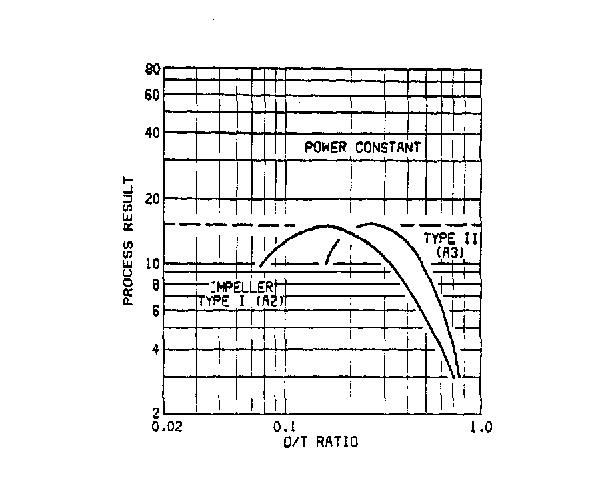
Some very useful correlations which can be used to obtain the power draw and the pumping rate of the impeller are shown in the graph below. This graph plots both the pumping number and the power number as functions of the Reynold's number. One can calculate the Reynold's number for a given system, and the use the graph to. When using these graphs, it is important to verify that the correlations are appropriate for the impeller and tank geometry present in your system. The correllations shown here are for a pitched blade turbine, and a high-efficiency turbine (a variation on the pitched blade turbine) with a D/T ratio (impeller diameter/tank diameter) of 1/3.

Another useful correlation helps one to maximize the process result by adjusting the D/T ratio. This correlation is again specific for different impeller types and tank geometries

There are many different correlations available for different impellers and tank geometries which can be found in the literature and texts such as Perry's Chemical Engineers' Handbook.
 To the Mixing in Chemical Reactors Main Page
To the Mixing in Chemical Reactors Main Page